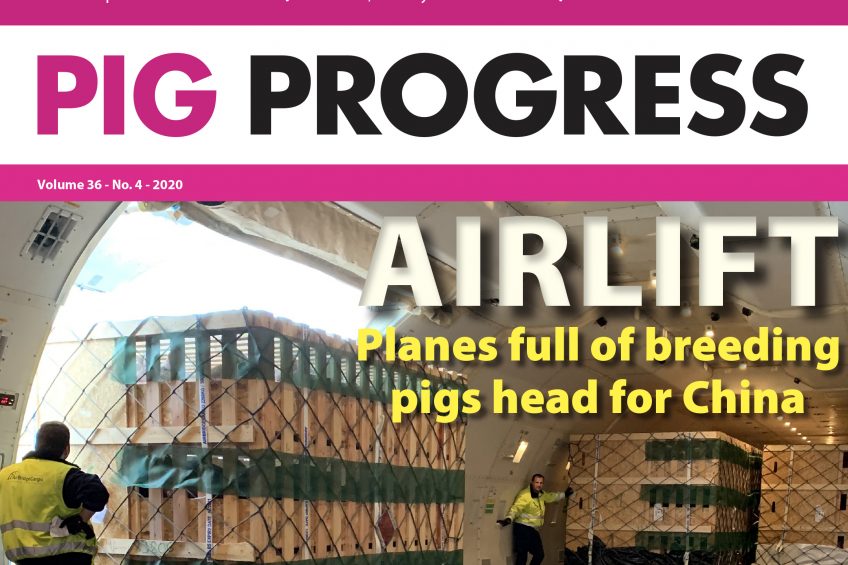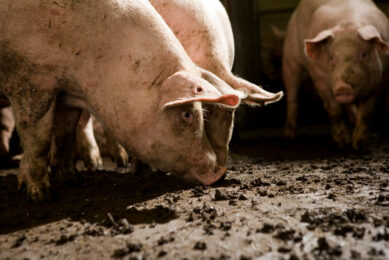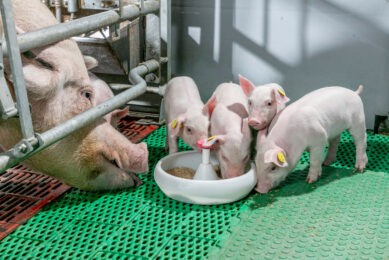Corona and China in Pig Progress 4

The latest edition of Pig Progress in 2020 is now available to read digitally. We take a deep dive into which coronaviruses affect pigs. We jet off to China to see how the country is rebuilding its pig herd, to Vietnam to understand how ASF has accelerated developments and to Russia to see how the country is rising in the global pig sector.
View Pig Progress Digital Magazine
Coronaviruses in pigs
The world has been experiencing the effects of the coronavirus – or Covid-19 – for several months now, but coronavirus itself has in fact existed for much longer with the latest edition being the pathogen SARS-CoV-2. In this article we look at which coronaviruses are known to affect pigs, and why this particular one doesn’t.
There are 6 different strains of coronaviruses that are known to affect pigs, and although the latest Covid-19 coronavirus has had a significant effect on the global pig industry, pigs are in fact not susceptible.
Planes full of breeding pigs head to China
The repopulation of Chinese pig houses has certainly taken off, as have 6 airplanes transporting over 5,000 breeding pigs to the country. Other shipments are meanwhile also arriving, and further flights have been scheduled, all aimed at meeting China’s need for what has been described as an ‘insatiable’ hunger for breeding pigs.

“I expect growing demand from China in the second half of 2020, and for 2021 I expect sales will truly peak,” says Jim Schirmer, responsible for business development in Asia with Choice Genetics.
The pig business will look completely different in Vietnam
Vietnam reported its first ASF cases in February 2019 and by August the infection had spread to all 63 provinces, claiming 6 million pigs. Compared to 2016, less than 60% of the sow population remains due to ASF. The situation has, however, accelerated developments in the country’s pig industry.

Column: The profit box
The profit box has been used by columnist John Gadd for many years. It enables producers to compare an existing contract for finished pigs with others on offer, shows how well producers are doing in meeting contract obligations, and allows to assess the value of new breeding lines.

Russia embraces a new global role in pork
What is next for Russia, a country that was once one of the biggest pork importers, but which has now not only secured self-sufficiency, but has also become a low-cost producer?
![“The overall investment in the Russian pig industry is expected to be around 200 billion roubles [US$ 3.3 billion] by 2023,” says Sergey Yushin of the National Meat Association. - Photo: Vladislav Vorotnikov “The overall investment in the Russian pig industry is expected to be around 200 billion roubles [US$ 3.3 billion] by 2023,” says Sergey Yushin of the National Meat Association. - Photo: Vladislav Vorotnikov](/Resizes/420x315/PageFiles/33/02/40233/005/006_172_IMG_KopievanKopievanDSC_0123web.jpg)
Supplementation for liquid pig feed
Liquid feeding provides some benefits over dry feed in pig production, including the capacity for producers to make quick diet adjustments, and to more easily mix in new supplements. New products focus on gut and immune heath.

Interventions to better deal with IUGR in piglets
As litter sizes increases, so does the chance of some piglets being born with intra-uterine growth
retardation (IUGR). How is the phenomenon defined and what can be done to best treat these piglets?

Why toxin binders may not work
There is an increasing awareness of the negative impacts of mycotoxins in feedstuffs on pig health. As such, products such as toxin binders are added to swine feed in very small quantities to dispose of mycotoxins within a pig’s gastro-intestinal tract. This article sums up 6 reasons why a binder may not work.

Pig feed formulations for antibiotic-free production
Feed is a critical aspect of successful raised-without-antibiotics production. In North America, the challenges remain regarding antibiotic-free production, whereas in Canada, easing regulations allow the use of some ingredients already available internationally.

A boost of oxygen to sow productivity
The number of piglets per litter continues to grow, but the more piglets born per litter, the longer the farrowing duration and the greater the risk of stillbirths.

Overstocked pens
In the US, pig producers are working on adapting schedules to maintain finisher pigs on farm for longer given the number of Covid-19 cases among personnel at processing facilities. In this article, Monique Pairis-Garcia addresses specific welfare issues when working with heavy finisher pigs.

Because of Covid-19, edition #3 of Pig Progress was distributed digitally only. To ensure the content would reach a wide audience, the following articles have been included in this edition of Pig Progress as well.
Improving the outcome of antimicrobial treatment
The use of antibiotics is an integral part of a swine health plan, which includes health monitoring, disease diagnosis, disease prevention and disease treatment measures.

Combating Salmonella in pig farms
Salmonella is very resilient and can survive in dust for up to four years, making it a big problem in pig farms. However, work on farms in Germany taking part in Salmonella control programmes has shown that it is possible to eliminate the disease from commercial herds.

Next generation Dutch pig farmer
Farrow-to-finish farm Jansberg in the Netherlands applies modern technology throughout the facility. Owner Tom Janssen is always looking ahead. A modern gestating area is the latest upgrade to the farm.

To read the full articles, simply click on the digital magazine section and then on Pig Progress 2020-4. Registration is free.











